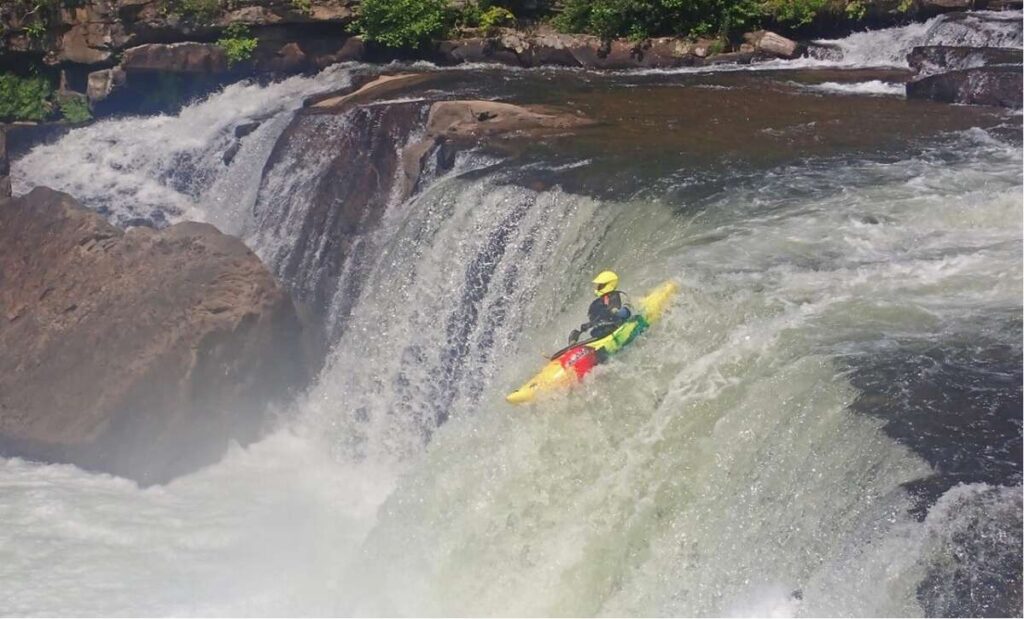The responsibilities of the KCCNY trip coordinator are minimal and do not include responsibility for safely leading others down the river. Our official trip rules specifically state that everyone is responsible for themselves. You don’t have to be an expert paddler or a swift-water safety instructor to be a trip coordinator.
It does help if you are familiar with the river that you are coordinating, But some research that leads you to believe you can run it safely is sufficient.
So what the coordinator’s responsibilities?
Though we no longer use their insurance due to cumbersome scheduling and reporting procedures, we run trips using American Canoe Association Risk Management Requirements.
These are common sense safety guidelines, such as signing waivers, wearing PFDs and helmets (above class 1), carrying at least 2 throw ropes and more for larger groups, etc. They are all things that you should be doing anyway.
Though no one should show up who hasn’t signed up, especially on commonly run rivers where people tend to show up and cell service is bad (like the Mongaup), BRING HARD COPIES OF THE WAIVER AND, IF IN DOUBT, GET A SIGNED PAPER WAIVER.
We do not post the time and meeting place online so that anyone who wants to join has to contact the trip coordinators and can screen participants, with the exception of trips where little or no skill is required, such as pool or flatwater practice sessions.
Club trips require at least 2 boats, as a second boat needs to be available to render assistance.
Summary of our procedures
To schedule a trip, use our submit an activity form.
Before the trip begins:
Assess the skill level and preparedness of participants. Any participant that the coordinator feels is not suited for the trip shall not be permitted to participate. This may include, but is not limited to, assessment of skill level, appropriate clothing and equipment and its condition, and suspected use of alcohol or illegal drugs. Any paddler whose conduct is, in the opinion of the trip coordinator, potentially hazardous to him or herself or to the group will be asked to leave the group. If cell phone coverage or access is not available during the majority of the trip, a responsible party should know your plan, whom to contact and when in the event of a significant delay.
ON OUR WEBSITE from manage bookings choose the event and you can approve, delete, email participants, export a list of participants details and even ‘ ADD BOOKING’ (if no money is involved). More details on how coordinators can use our website.
 KCCNY understands that volunteer coordinators must make a decision based on the overall group safety and with limited information on abilities and risks. Other than adhering to KCCNY’s anti-discrimination and anti-harassment policy, the decision to exclude a participant is entirely up to the coordinator. If a potential participant doesn’t agree with the decision, have them reach out to the safety or activities chair or any board member.
KCCNY understands that volunteer coordinators must make a decision based on the overall group safety and with limited information on abilities and risks. Other than adhering to KCCNY’s anti-discrimination and anti-harassment policy, the decision to exclude a participant is entirely up to the coordinator. If a potential participant doesn’t agree with the decision, have them reach out to the safety or activities chair or any board member.
The trip coordinator has the authority to adjust the specifics of the trip, including the river (and the section of the river*) to be paddled, to account for conditions existing at the time of the event, such as weather, water levels, or the specific make-up of the group (i.e. number of paddlers, ability levels, etc.).
KCCNY club trips are characterized by all the paddlers contributing what knowledge and experience they possess towards the group’s fun and safety on the river. A trip coordinator is merely a club member who has volunteered to arrange the meeting of interested members to paddle at a particular place and time. While coordinators often have specific knowledge of the river in question, this is not part of their responsibility. Once on the river, coordinators have no burdens as guide or trip leader.
Review the American Canoe Association Risk Management Requirements with the group before getting on the water.
Before the activity:
Contact participants – Participants need to know the meeting location and shuttling plan. Details on how coordinators can use our website to export lists and email participants.
Print out a few paper waivers in case someone shows up like a friend of a participant who is otherwise qualified to paddle the river.
At the Start of the Event
- All participants must read and sign the waiver and release of liability before the event begins. Currently the website allows only waivered members and guests to register.
If you have any doubt about a participant’s waiver status, insist on a complete and signed paper waiver. - Announce at the start of the event that “If you have not signed a waiver and paid the event fee, if applicable, then you are not a participant in KCCNY’s trip or event. If you choose to paddle the river on your own then you do so at your own risk.“
- Check for proper equipment. Inadequate helmets and pfds are usually pretty obvious, but also check for insufficient clothing, missing or under inflated float bags.
- If you’re concerned, ask folks to prove skills by rolling, wet exiting, ferrying or whatever you feel is needed.
After the Event
- If there’s no injuries, your done. Wasn’t that easy?
- If there are any issues see on our after trip procedure page.
Special Situations
Trips with other clubs
Sorry – if it’s not an official KCCNY trip with insurance and waivers, it’s not our trip. We can post other club’s trips on our website but must clearly state that it’s not a club trip and how they can register.
On our trips, non-KCCNY members can come as guests.
Other activities
Our insurance covers social events and fundraisers, but not other athletic including skiing, climbing, biking, skating, hiking.
Questions – Contact us.






